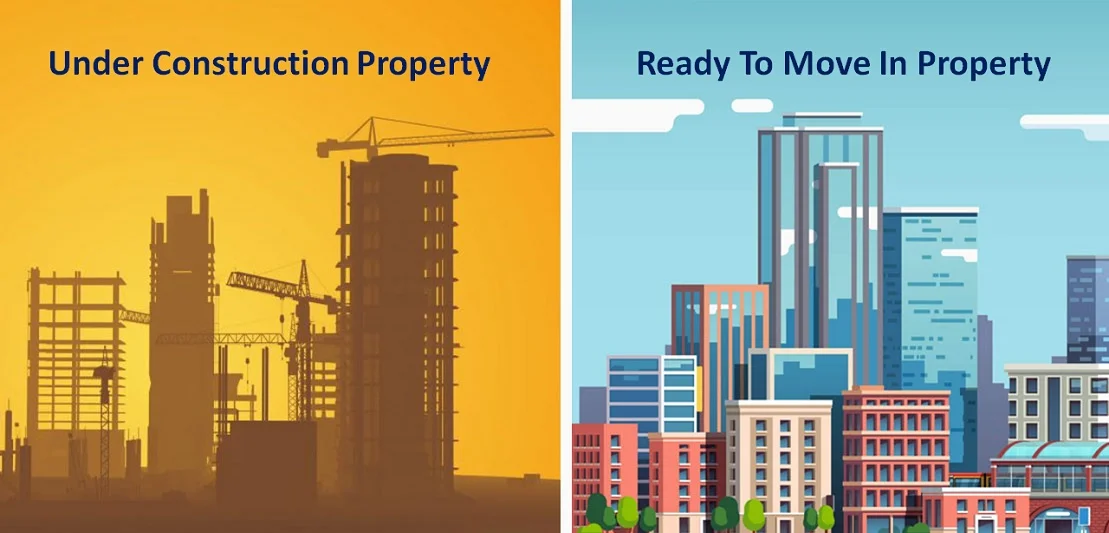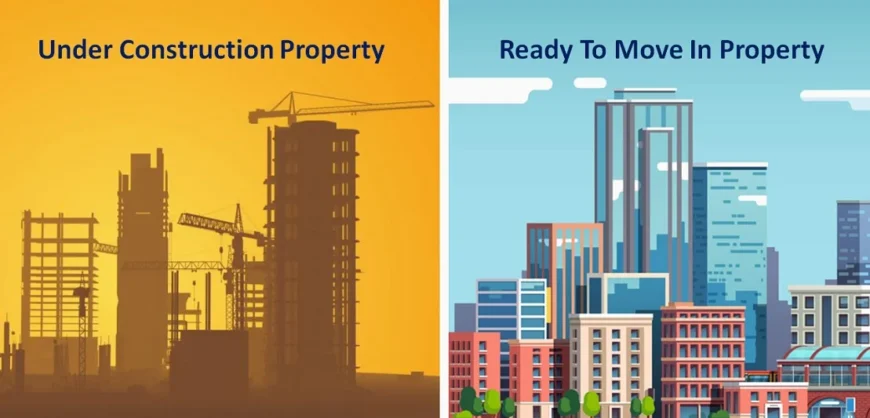
Under Construction Vs. Ready-To-Move-In Property: Which One Is Better For You?
In India’s fast-evolving real estate market, one of the most common dilemmas homebuyers face is choosing between a fresh launch (under-construction property) and a ready-to-move-in (RTMI) home. Both options come with their own sets of benefits and potential drawbacks. In this blog, we break down the differences to help you make the right decision based on your needs, budget, and goals.
Under-Construction Properties (Fresh Launches)
✅ Advantages
1. Financial Relief During Construction
Fresh launches usually come with more attractive pricing—often 10–30% cheaper than completed homes—making them ideal for first-time buyers or investors looking for a better deal.
2. Flexible Payment Plans
With construction-linked payment options, buyers don’t need to pay the entire amount upfront. This eases the financial burden and gives time to plan finances better.
3. Scope for Customization
Early buyers often get the opportunity to tweak the layout, finishes, and interiors. It’s a great way to personalize your future home before it’s even built.
4. Potential for Appreciation
Properties bought in the pre-launch or construction phase often see a rise in value by the time they are completed—especially in high-growth areas.
❌ Disadvantages
1. Possession Delays
Despite regulations like RERA, delays in delivery due to approvals, funding issues, or other challenges are still common.
2. GST Charges
A 5% GST applies to under-construction properties, increasing the total cost compared to ready homes.
3. Quality Uncertainty
You’re buying based on brochures, plans, and promises. There’s always a risk that the final product may not match your expectations.
4. No Immediate Rental Return
If you’re planning to rent it out, income starts only after completion—possibly years later.
Ready-to-Move-In (RTMI) Homes
✅ Advantages
1. Instant Possession
No waiting. Once the paperwork is done, you can move in immediately or rent it out for income.
2. GST Exempt
There’s no GST applicable on completed properties, saving you a chunk of money upfront.
3. What You See Is What You Get
You can inspect the flat physically before you buy—no surprises. This ensures peace of mind regarding quality, amenities, and location.
4. Immediate Rental Income
For investors, a ready home means immediate cash flow from day one of possession.
❌ Disadvantages
1. Higher Cost
You pay a premium for the convenience of moving in right away and avoiding risks.
2. No Customization
Since the property is already built, you have limited or no scope to make changes.
3. Full Payment Required Upfront
There’s usually less room for staggered payments, so buyers must be financially prepared for a lump-sum investment.
Under Construction Vs. Ready-To-Move-In Property : Quick Comparison
| Feature | Under-Construction | Ready-to-Move-In |
|---|---|---|
| Price | Lower | Higher |
| Payment Flexibility | Staggered | Upfront |
| Customization | Possible | Limited |
| Possession | Delayed | Immediate |
| GST | 5% Applicable | Not Applicable |
| Rental Income | After Completion | Immediate |
| Risk of Delay | Higher | Minimal |
| Inspection Before Buy | Based on Plans | Full Property Inspection |

Which One Should You Choose?
Choose an Under-Construction Property if:
You’re budget-conscious and don’t mind waiting.
You want a chance to customize your home.
You’re investing for long-term gains.
Choose a Ready-to-Move-In Property if:
You need a home urgently.
You want to avoid uncertainty and delays.
You want immediate rental income.
Final Takeaway
There’s no one-size-fits-all answer. Your ideal choice depends on your financial position, urgency, and investment goals. Under-construction homes offer flexibility and price advantages but come with risks. Ready-to-move-in homes offer certainty, but at a higher cost. Before making a decision, it’s wise to consult with a trusted real estate advisor who understands your local market and your personal needs.




